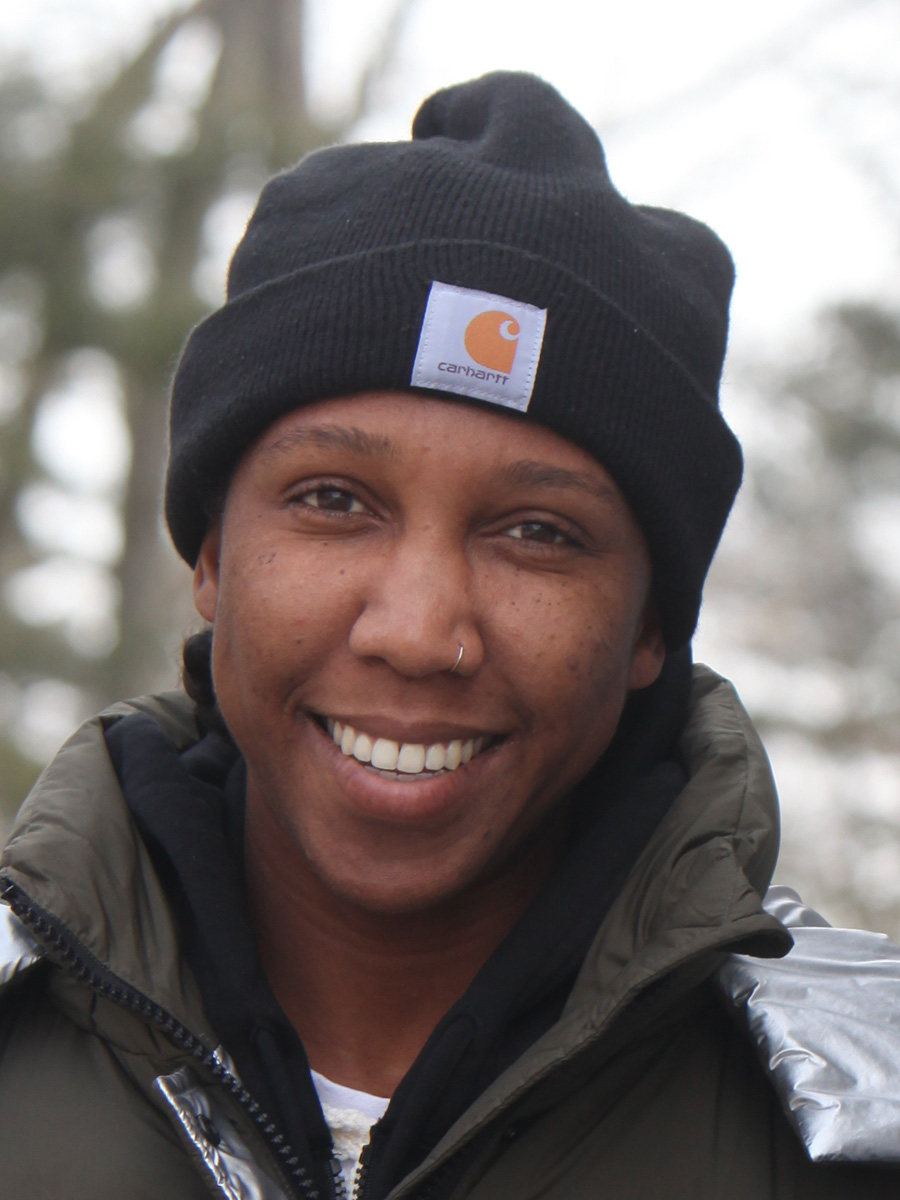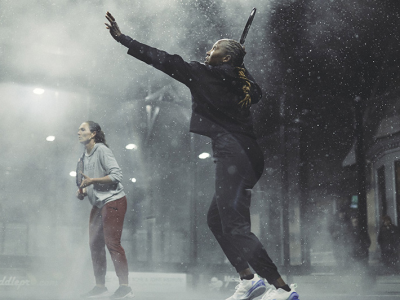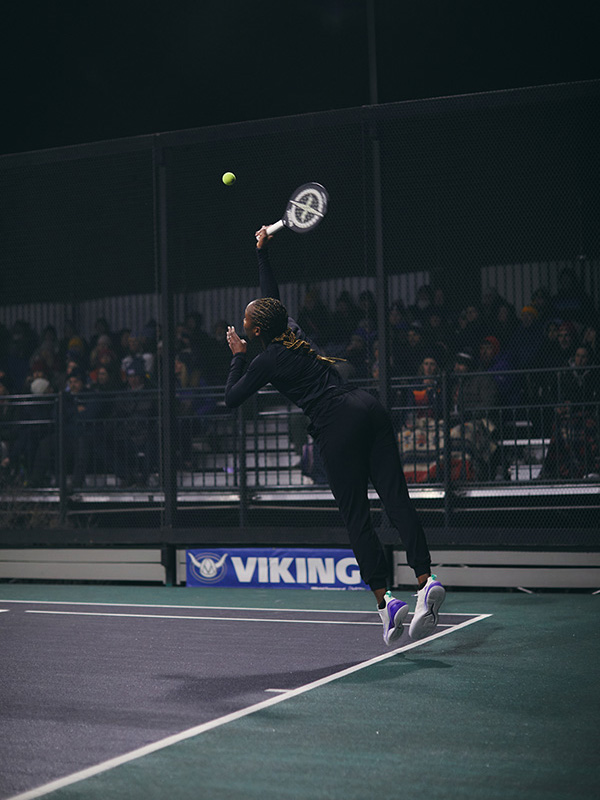NEWS
The Transition from Tennis to Platform Tennis

By Lynn Kiro (Reprinted from 2022)
“Who in their right mind would ever play an outdoor sport in the winter?” This was the first thought that trickled through my mind when I first discovered the sport in 2021. My warm-blooded South African self could not grasp this concept until I finally started to embrace it. However, my love for tennis and pickleball made me view platform tennis as more of a rec sport; a rec sport in 30-degree weather? No, thank you. Yet here I am, a year later, writing an article on the transition from tennis to platform tennis and being totally obsessed with the game.
Similarities
I have grown extremely fond of this sport because of how similar it is to tennis.Strokes Ground strokes (forehand and backhand) are very similar, which makes it quite easy for current tennis players and has-beens such as myself to pick up the sport. Having a tennis background will definitely speed up your progression in the sport.
Scoring The scoring is exactly the same as tennis, which makes it less intimidating to get into match play. With a sport like pickleball, the scoring is so different that it can be somewhat intimidating when starting to compete. Knowing the scoring right off the bat allows you to be able to focus on more important things such as tactics and playing freely.
Court Structure The court has an identical structure to that of a tennis court. It feels like you’re playing tennis in a cage on a micro-sized court with all of the same strokes, except they’re on steroids.
Differences
Technique In platform tennis, the technique is slightly different because of the paddle, ball, and size of the court. 1) For ground strokes, the backswing is shorter/more compact because you have less time due to the size of the court. The ball doesn’t always bounce the same way and can sometimes come off the screens in an unpredictable manner due to spin, so keeping the back swing short helps you adjust quickly. Having a more compact swing also aids in disguising your shots so you can keep your opponents guessing. 2) The ready position at the net is something that takes getting used to for a tennis player. Being ready in the backhand volley position as opposed to the neutral position makes it possible to react to balls being driven at you. Because the court is so small, there is less distance between players which means that there isn’t enough time to be in a neutral-ready position. Every now and then I catch myself not being in the correct ready position, because I’ve been doing it one way my whole life. It takes a lot of discipline and focus at first to get rid of those tennis habits. 3) The biggest difference that I see technique-wise is the volley, which goes hand-in-hand with the ready position. In my opinion, this is easily the most compact shot in the game. It’s a fun shot to hit because all you’re essentially doing is absorbing the pace of the ball. It is key to stay low and have a wide stance as you prepare for the shot. The harder the ball is hit at you, the easier it is to absorb it if you’re able to execute all of those steps.
Screens Playing off the screens was the most challenging part of the transition for me. At first, I felt like a chicken running in circles because I had no clue which direction the balls were going, once they hit the screens. I remember watching my boyfriend Sven [Burus] play and wondering how it was humanly possible to take so few steps while playing off the screens. I probably blocked about 60% of my lobs during my first season, simply because I was more comfortable playing off the deck as opposed to the screens. The beauty of the screens is that they end up being your best friend once you figure them out. My relationship status with the screens went from being “it’s complicated” to “in a relationship.” They are hands down the most fun part of the game.
Shot Selection The wide variety of shots to choose from make paddle one of the most fun racquet sports to play and contributes to making the game a little more complex than tennis. I like to think of paddle as tennis on steroids when it comes to shots, because they can be so much more effective when executed properly. The spin that rollers create or the bite that cutters give is what makes this sport so fun/challenging/frustrating all at the same time.

Weather I have experienced first-hand that the weather can make or break a match. The weather plays a huge part in how quickly the ball moves through the air and how it bounces, which may force you to adjust your tactics completely. The ball could feel like a bouncy ball one day and like a rock the next. The hard overhead, roller, and “fym” shots work particularly well in the warmer weather, as opposed to the softer/off-pace shots which are golden in the cold. Being able to mix up the pace, have a variety of shots, and play in any condition is what separates the top players from the rest. These are all factors that add to the complexity/toughness level of the sport and aids in keeping us competitive folk around.
Patience This is a skill that I’ve had to develop while competing. As a tennis player, I was a big hitter and liked finishing points quickly. Paddle really humbled me as soon as I found out that 60-70 shot rallies were a common thing. The beauty of the game is that there are a lot of shifts in transition during points, which means resetting and staying patient so that you don’t overplay or make bad decisions. When I first started competing, I found myself wanting to smack the ball to end points, but I learned to stay patient and mentally locked in to win points by forcing my opponents to make unforced errors. Thanks to paddle, I have learned to be more patient both on and off the court.
What Surprised Me
The thing that surprised me most is how quickly I went from dreading the sport to absolutely loving it. The wintry weather, long points, and screens were all things that I was not a fan of at first. However, once I learned to embrace it all, I was able to fall in love with the sport and have fun with competing.
What Frustrated Me
The two most frustrating things for me at the start were constructing points and the weather. I got to the point where I was pretty comfortable with my strokes but had zero idea what to do tactically. I also wasn’t getting any match play in because I didn’t have a partner until the second half of the season. Once I was able to start playing more, I was able to see the court better and become more tactically sound. As far as the weather part goes, I just sucked it up and now actually enjoy doing outdoor activities during the winter. It’s amazing how quickly your layers start to come off, even in below-freezing temperatures.

What I Love About the Sport
I absolutely love that I was able to pick up another racquet sport at this stage in my life. I was burnt out after playing competitive tennis at a high level for most of my life, so to be able to channel my inner competitive juices and bring my racquets skills to a different sport has been nothing short of amazing. I love that there is a huge sense of community in paddle—I have never experienced support to this magnitude. Instead of the traditional representation of countries, I get to represent and play for the club where I work, which is pretty cool. My hope is that the sport continues to grow and become more accessible around the country, as I think it is one of the greatest racquet sports around.
Tips for Transitioning From Tennis to Platform Tennis
- Have fun and enjoy the process.
- Keep your backswings compact on your strokes.
- Force yourself to hit as many backhand volleys as possible at first.
- Get comfortable playing on both the deuce and ad sides of the court.
- Accept that it isn’t and never will be tennis, only a more fun version.
Lynn Kiro is the 2023 Women's National Champion (with Macie Medeiros) and the Director of Racquets at Roxiticus Golf Club in Mendham, NJ. She is currently ranked 3rd in the country (with Medeiros). Lynn played Fed Cup for South Africa, college tennis at Texas Tech in Lubbock, Texas and was the Head Women's Tennis coach at Wagner College in New York where she completed her MBA.

